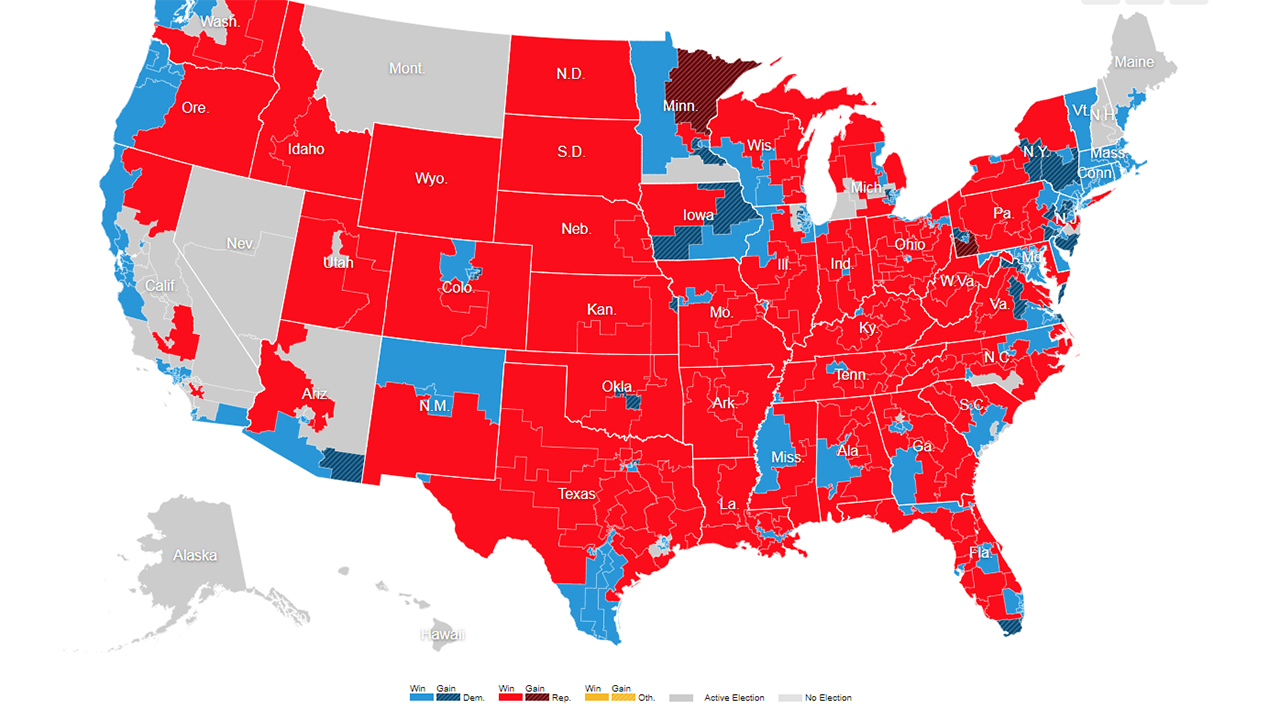0 Us House Election
- Republican Representative John Katko won a fourth term in the U.S. House, the Associated Press projected, beating Democrat Dana Balter to continue representing New York’s 24th district.
- Ilhan Omar, a member of the progressive Squad in Congress, will hold onto her US House seat in Minnesota after she won reelection and defeated a well-funded Republican challenger.
- The winner of the election is determined through a system called the electoral college. Each of the 50 states, plus Washington DC, is given a number of electoral college votes, adding up to a.
NPR’s sites use cookies, similar tracking and storage technologies, and information about the device you use to access our sites (together, “cookies”) to enhance your viewing, listening and user experience, personalize content, personalize messages from NPR’s sponsors, provide social media features, and analyze NPR’s traffic. This information is shared with social media, sponsorship, analytics, and other vendors or service providers. See details.
You may click on “Your Choices” below to learn about and use cookie management tools to limit use of cookies when you visit NPR’s sites. You can adjust your cookie choices in those tools at any time. If you click “Agree and Continue” below, you acknowledge that your cookie choices in those tools will be respected and that you otherwise agree to the use of cookies on NPR’s sites.
Democrats in the House of Representatives will be fighting to defend their new majority in the 2020 election after reclaiming control in 2018 following eight years out of power.
The average margin of victory in the 2020 elections for U.S. House was lower than at any point since at least 2012.
A margin of victory refers to the difference between the share of the vote received by the winning candidate and the share of the vote received by the runner-up. For example, suppose Candidate A wins an election with 55% of the vote, and Candidate B is the runner-up with 45%. In that scenario, the margin of victory would be 10 percentage points. Margins of victory can be used to measure electoral competitiveness, political party or candidate strength, and, indirectly, the popularity of a particular policy or set of policies.
In the 35 U.S. Senate elections that took place in 2020, the average margin of victory was 18.1%. This is a larger margin than the 16.8% average in the 2018 U.S. Senate elections but smaller than in any other year since 2012. Republicans had a larger average MOV in U.S. Senate elections; the average Republican election winner had a lead of 22.0 percentage points over the runner-up, compared to 12.8 percentage points for the average Democrat.



Democrats won four of the five closest U.S. Senate elections in 2020, with the closest being Jon Ossoff’s (D) 0.83 percentage point margin over incumbent David Perdue (R) in the regularly-scheduled Georgia Senate election. The closest U.S. Senate election won by a Republican was incumbent Thom Tillis’ (R) 1.75 percentage point win over Cal Cunningham (D) in North Carolina.
/cdn.vox-cdn.com/uploads/chorus_image/image/63598175/u_s__capitol_e1538160171809.0.jpg)
Republicans won four of the five elections with the widest margins of victory, with the widest margin being Cynthia Lummis’ (R) 46.09 percentage point win over Merav Ben-David (D) in Wyoming. The largest margin for a Democratic senator was incumbent Jack Reed’s (D) 33.12 percentage point win over Allen Waters (R) in Rhode Island.

In the 435 U.S. House elections that took place in 2020, the average margin of victory was 28.8%. This is down from 31.8 percentage points in 2018 and is the narrowest average margin in U.S. House elections since at least 2012. Reversing the pattern in the Senate, Democrats had a larger average margin in House elections. The average Democratic election winner had a margin of 31.5 percentage points, compared to 26.0 percentage points for the average Republican.
0 Us House Election
There were three U.S. House elections decided by margins of 500 votes or fewer. The narrowest was Mariannette Miller-Meeks’ (R) six-vote win over Rita Hart (D) in Iowa’s 2nd Congressional District, the closest U.S. House election since 1984. As of Jan. 15, a winner had not been declared in New York’s 22nd Congressional District, but Claudia Tenney (R) led incumbent Anthony Brindisi (D) by 29 votes. Finally, incumbent Mike Garcia (R) defeated Christy Smith (D) by 333 votes in California’s 25th Congressional District. In 2018, the closest U.S. House election was incumbent Rob Woodall’s (R) 433-vote win over Carolyn Bourdeaux (D) in Georgia’s 7th Congressional District.
Leaving out the results of New York’s 22nd Congressional District (which is all but certain to be among the top 10 closest U.S. House elections regardless of which candidate wins), the nine other closest U.S. House races include seven Republican wins and two Democratic wins. The narrowest win by a Democrat was incumbent Tom Malinowski’s (D) 1.22 percentage point margin over Thomas Kean, Jr. (R) in New Jersey’s 7th Congressional District.
Not counting elections where a candidate ran unopposed or faced only write-ins, Democrats won each of the 10 least close U.S. House elections. The widest margin in such a race was incumbent Adriano Espaillat’s (D) 83.02 percentage point margin over Lovelynn Gwinn (R) in New York’s 13th Congressional District. The widest margin of victory for a Republican member of the House was incumbent Hal Rogers’ (R) 68.42 percentage point margin over Matthew Ryan Best (D) in Kentucky’s 5th Congressional District.
For more details, including a complete table of Congressional MOVs in 2020, click here: https://ballotpedia.org/Election_results,_2020:_Congressional_margin_of_victory_analysis
Additional reading: